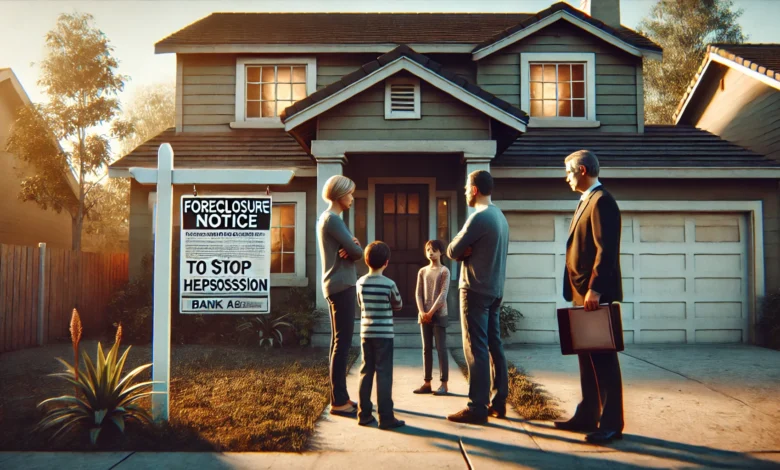Stop House Repossession: Expert Tips to Save Your Home

Facing the threat of losing your home is one of the most stressful experiences anyone can go through. When mortgage arrears pile up and lenders start sending letters, it feels like the walls are closing in. But here’s the truth: repossession doesn’t happen overnight, and you have more power to fight it than you might think. In this article, I’ll walk you through everything you need to know about how to stop house repossession, from understanding the process to exploring practical solutions that actually work.
Understanding What House Repossession Really Means
Before we talk about how to stop house repossession, let’s clear up what it actually involves. Repossession is when your mortgage lender takes legal action to reclaim your property because you’ve fallen behind on repayments. In most cases, this only happens after repeated missed payments and communication attempts. It’s not something lenders do lightly because, believe it or not, they don’t really want your house — they want the money you owe them.
The repossession process starts with warning letters. If payments aren’t brought up to date, the lender may go to court to seek possession of the property. A judge then decides whether repossession is justified or if other arrangements can be made. Importantly, repossession is always the last resort — meaning you still have a chance to act before it’s too late.
Understanding this process is crucial because many homeowners panic, avoid the problem, and lose valuable time. If you want to stop house repossession, the first step is acknowledging the issue and taking immediate action. The earlier you deal with it, the better your options will be.
The Emotional Toll of Facing Repossession
Dealing with financial problems is one thing, but the emotional side of repossession can feel overwhelming. People often describe it as carrying a heavy burden that never leaves their mind. The thought of losing not just a property but your home — the place where you’ve built memories — can feel devastating.
This emotional stress often leads to avoidance. Many homeowners ignore calls or letters from their lender, hoping the problem will magically disappear. Unfortunately, silence only speeds up the repossession process. Lenders and courts interpret it as unwillingness to cooperate, which works against you.
To stop house repossession, you need to fight that instinct to hide. Opening those letters, answering phone calls, and dealing with the problem head-on shows you’re serious about finding a solution. And remember, you’re not alone in this — thousands of people face repossession every year, and many successfully turn things around.
First Steps to Stop House Repossession Immediately
When you realize repossession could be on the horizon, speed is everything. The first and most effective step is to contact your lender. This might sound terrifying, but lenders are often more flexible than people expect. If you explain your situation honestly, they may agree to temporary payment holidays, reduced payments, or repayment plans that make it easier for you to catch up.
Another key step is to review your finances in detail. Many people don’t realize how much they’re spending unnecessarily until they sit down and track it. Cancel unused subscriptions, cut back on non-essential spending, and redirect that money toward your mortgage. Even a small increase in payments can show good faith to your lender and buy you time.
Lastly, seek professional advice. Charities, financial advisors, and legal experts can guide you on the best course of action for your specific circumstances. Sometimes the right advice can mean the difference between keeping your home and losing it. Acting quickly with expert support is one of the most powerful ways to stop house repossession.
Legal Protections That Can Help You
What many homeowners don’t realize is that the law actually provides several protections against repossession. Courts will always consider whether you’ve made a genuine effort to pay before granting repossession. If you can show you’ve taken steps to manage the debt — like offering partial payments or negotiating with your lender — judges are often reluctant to approve immediate eviction.
In some cases, courts may grant what’s known as a suspended possession order. This means you can stay in your home as long as you keep up with an agreed repayment plan. It’s not a permanent fix, but it gives you valuable breathing space to stabilize your finances.
There are also insolvency solutions like Debt Relief Orders, Individual Voluntary Arrangements (IVAs), or bankruptcy that may stop repossession. While these sound intimidating, they can provide legal protection from creditors, giving you time to get back on track. Understanding your legal rights is a big part of learning how to stop house repossession effectively.
Alternatives to Repossession: Exploring Your Options
Stopping repossession doesn’t always mean you need to magically find extra money overnight. In fact, there are several creative and practical options that can help you protect your home.
One option is to remortgage or refinance. If you have equity in your property, you may be able to switch to a new mortgage with lower payments. Even if your credit isn’t perfect, some lenders specialize in helping people in financial difficulty. This can reduce monthly costs and make repayments manageable again.
Another option is to sell your house voluntarily before repossession happens. While this might sound like giving up, selling on your own terms often means you’ll get a better price and avoid the stigma of repossession. This way, you can pay off your mortgage debt and possibly have money left over to start fresh.
Lastly, consider government schemes or hardship programs. In some regions, there are specific support services designed to help struggling homeowners. These programs can provide temporary payment support or help you restructure your mortgage. By exploring every available option, you greatly increase your chances to stop house repossession.
Practical Tips to Prevent Repossession in the Future
Even if you manage to stop house repossession this time, it’s important to build a long-term strategy to avoid facing it again. Prevention is always better than cure.
The first step is to create a realistic budget. Too many people underestimate their expenses and overestimate their income. By tracking everything you earn and spend, you’ll see where money is leaking and how to patch those holes. Living within your means is the strongest shield against repossession.
Another strategy is to build an emergency fund. Life is unpredictable — job losses, illnesses, and sudden expenses can happen at any time. Having even a small savings buffer can keep you afloat during tough months and prevent you from missing mortgage payments.
Lastly, always communicate with your lender if you’re struggling. Most lenders would rather work with you than go through the costly process of repossession. By being proactive and honest, you’ll show them that you’re committed to keeping your home, which works in your favor.
Final Thoughts: You Can Stop House Repossession
The thought of losing your home is terrifying, but repossession isn’t inevitable. With the right steps, quick action, and willingness to face the problem head-on, you can protect your property and find a path forward. From talking to your lender and seeking expert advice, to exploring refinancing and legal protections, you have more options than you might realize.
The most important thing to remember is this: repossession is not the end of the road. It’s a challenge, yes, but one you can overcome. If you take action today, you can stop house repossession, secure your home, and start rebuilding your financial stability for the future.

